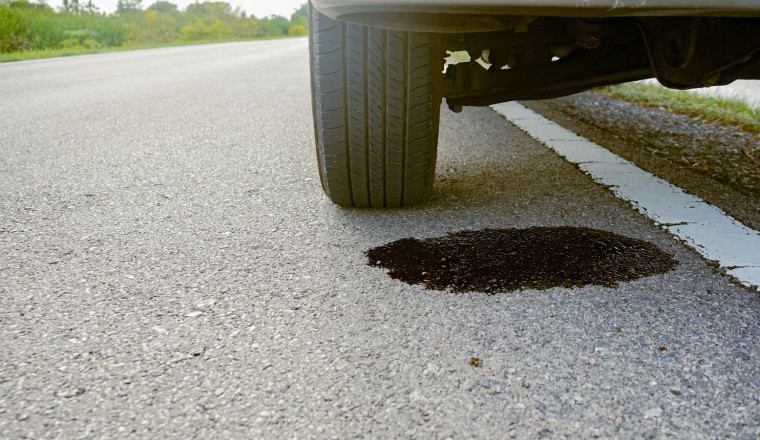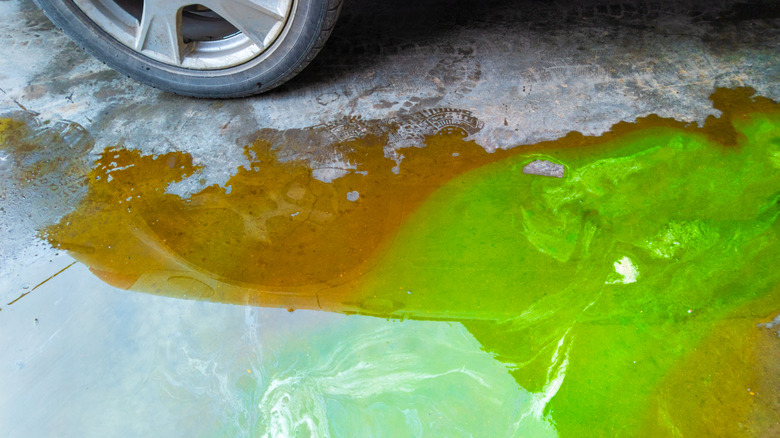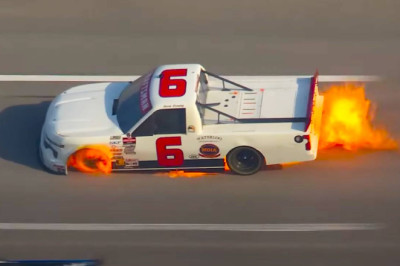
Going out to your car and finding a leak can make you worry about making it out of the driveway, let alone to the nearest auto repair shop. Depending on the severity of the leak, you may need to tow your car to avoid a hazardous situation. However, since there are so many different kinds of fluids flowing around your vehicle at any given moment, it can be difficult to tell what you need to worry about.
There's really only one instance in which you needn't worry — if the liquid leaking is clear, odorless, and doesn't stick to your fingers, then that's just water and is no cause for alarm. It probably just means your A/C system is functioning correctly. You may also find water dripping from the exhaust pipe, which is also usually okay as long as it's just a couple of droplets here or there.
If the leak is colored or smells, however, then there may be a cause for concern. You can narrow it down by the color, location, volume, consistency, and smell of the leak, but it can still be hard to tell what is what. A drop in your vehicle's performance is also a clear sign that something is amiss. Let's take a look at the different leaks you may discover and learn how to distinguish between those that have simple fixes and those that can be hazardous.
 Z1b/Getty Images
Z1b/Getty Images
Since many fluids eventually turn brown over time, color isn't always the best indicator of what the leak is. However, if the leak has a bright green, orange, pink, or blueish-green hue accompanied by a sweet candy-like smell, then it's likely a radiator coolant leak. You may need to flush your radiator, and you should probably give it a quick inspection. If it's just a loose clamp, it's an easy DIY fix with some basic tools. This leak usually appears under the engine, and if a clamp adjustment doesn't fix it, you can top off the reservoir to get it to a mechanic.
Red liquid can be either the transmission fluid or the power steering fluid. Hydraulic power steering systems are gradually being phased out of the auto market, so this likely won't apply to a newer vehicle. Otherwise, the best way to tell which is which is by the location of the leak. If it's towards the front of the car, then you have a power steering fluid leak. If the leak is coming from the middle to rear of the vehicle, or is dripping from lines under the car, then it's likely the transmission fluid. Either requires a visit to the mechanic.
A thin, slippery blue liquid could be a simple leak from the windshield wiper fluid reservoir. Leaking windshield wiper fluid could be caused by a crack in the reservoir, a tear in the tubes, or a loose connection. It's no cause for an emergency, but a mechanic can help diagnose the problem.
 Lovethewind/Getty Images
Lovethewind/Getty Images
Brake fluid is one of the most critical fluids your car needs. When fresh, it may appear clear or yellow, but coolant can also be yellow and water is clear, so the next step in identifying this leak is to assess its consistency and odor. Brake fluid is slick, slippery to the touch, and has a slightly fishy smell. If you have a brake fluid leak, see a mechanic immediately. You may want to consider getting your car towed if you can't top off the brake fluid reservoir before heading out.
Another essential fluid that your car needs is motor oil. Fresh motor oil typically has an amber color, but will turn brown or black as it ages. This leak will occur underneath the engine and have a pretty horrible smell, so don't get too close. Motor oil will build up more quickly due to its viscosity, making it slick and slippery and a pain to wash off if it stains your garage floor or driveway. This type of leak can be caused by a crack in the oil pan or by worn-out gaskets, seals, and valve covers. A motor oil leak is another potentially dangerous issue that warrants an immediate visit to a mechanic.
Leaks coming from your car are always a cause for concern, but they don't have to be a reason to panic. Identifying where the leak is occurring and what it might be can help you plan your next move — whether that's breaking out your toolbox or finding a lift to the mechanic. Either way, you'll be better prepared the next time you see a puddle forming underneath your car.














